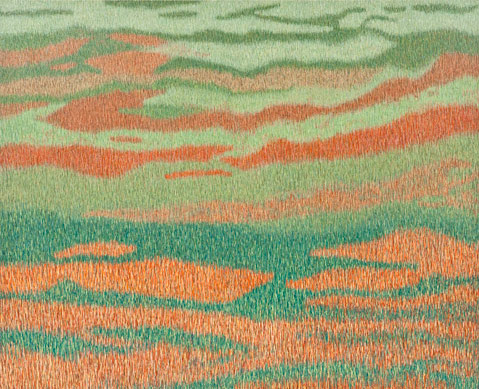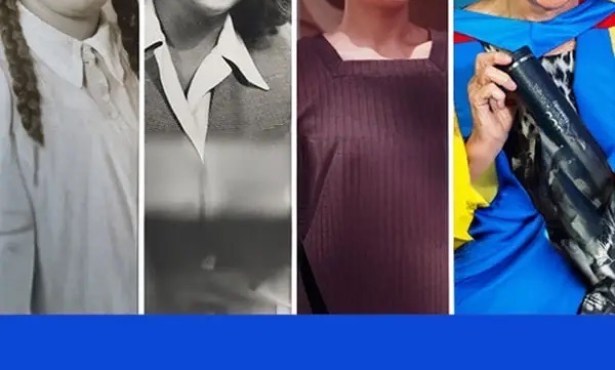Abstract Landscape
Cynthia Martin, John Baran, and Kenneth Ober at MichaelKate

Abstract paintings and landscapes tend to be thought of as opposites — except by painters, who know better. Many abstract paintings derive their compositional logic from the conventions of traditional landscape painting, and many landscapes borrow their most pungent effects from the gestural vocabulary of abstraction. Abstract Landscape is a powerful three-artist show that challenges the conventional abstract/representational divide with wit, clarity, and ravishing displays of color. Although Cynthia Martin, John Baran, and Kenneth Ober take different routes, each of these painters has arrived at an innovative place where the practices of painterly abstraction meet a revisionist approach to the idea of the landscape.
As John Baran is also a highly trained landscape architect, one might expect his work to be the most grounded, but in fact that is almost exactly wrong. It’s not that Baran’s paintings are not informed by his work and scholarship; it’s that for him, the leap to painting is something that occurred at 30,000 feet, as he gazed out of an airliner window en route from New York to Santa Barbara. To his credit, Baran has so thoroughly transformed this point of departure through the process of painting that the end result offers no obvious visual reference to his bird’s-eye vision. What his paintings do offer are: washes, streaks, smears, and even the occasional firm line, all animated by a sophisticated non-representational palette. Baran cites the polymath artist/designer Isamu Noguchi as an important influence, and it’s easy to detect the inspiration of that modernist master in this man’s contemporary vision.
In Ken Ober’s sensuous canvases, painstaking analysis of the subtle interaction of colors meets a truly heroic level of commitment to each individual mark. These shimmering visions of nature immerse, rather than orient, the viewer in the landscape. Ober has three major series represented in this show — Grasslands, Seascapes, and Starscapes — and all of them benefit from the impressive way this artist builds giant images out of tiny strokes of the auto detailing tool he uses instead of a conventional brush. His big “Grassland #18 Great Plains” makes a thrilling statement in the MichaelKate space. It’s like someone threw open a barn door onto another green world.
Cynthia Martin’s work reflects her belief that good art should, in addition to being extravagantly beautiful, make some kind of point. Her large paintings of sunlit clouds include an ingenious second element: bright sidebars made up of the same colors she used to paint the clouds, but arrayed as a vertical stack of geometric stripes and finished with the glossy surface of a custom car paint job. Martin, who grew up in the San Fernando Valley before it was as fully developed as it is today, is responding to her understanding of the fact that these brilliantly colorful sunset cloud formations indicate the presence in our atmosphere of various pollutants. Like the diptych pictures themselves, her art’s point has two parts. One is that the natural world is evanescent — no two sunsets are ever exactly the same. The other is that these ominous post-industrial clouds have occurred as a result of the human tendency to extract so-called natural resources in ways that may contradict the very idea of nature. Martin’s elegant, yet challenging images combine aesthetics and environmental awareness in a way that provokes a most welcome feeling of wonder.



